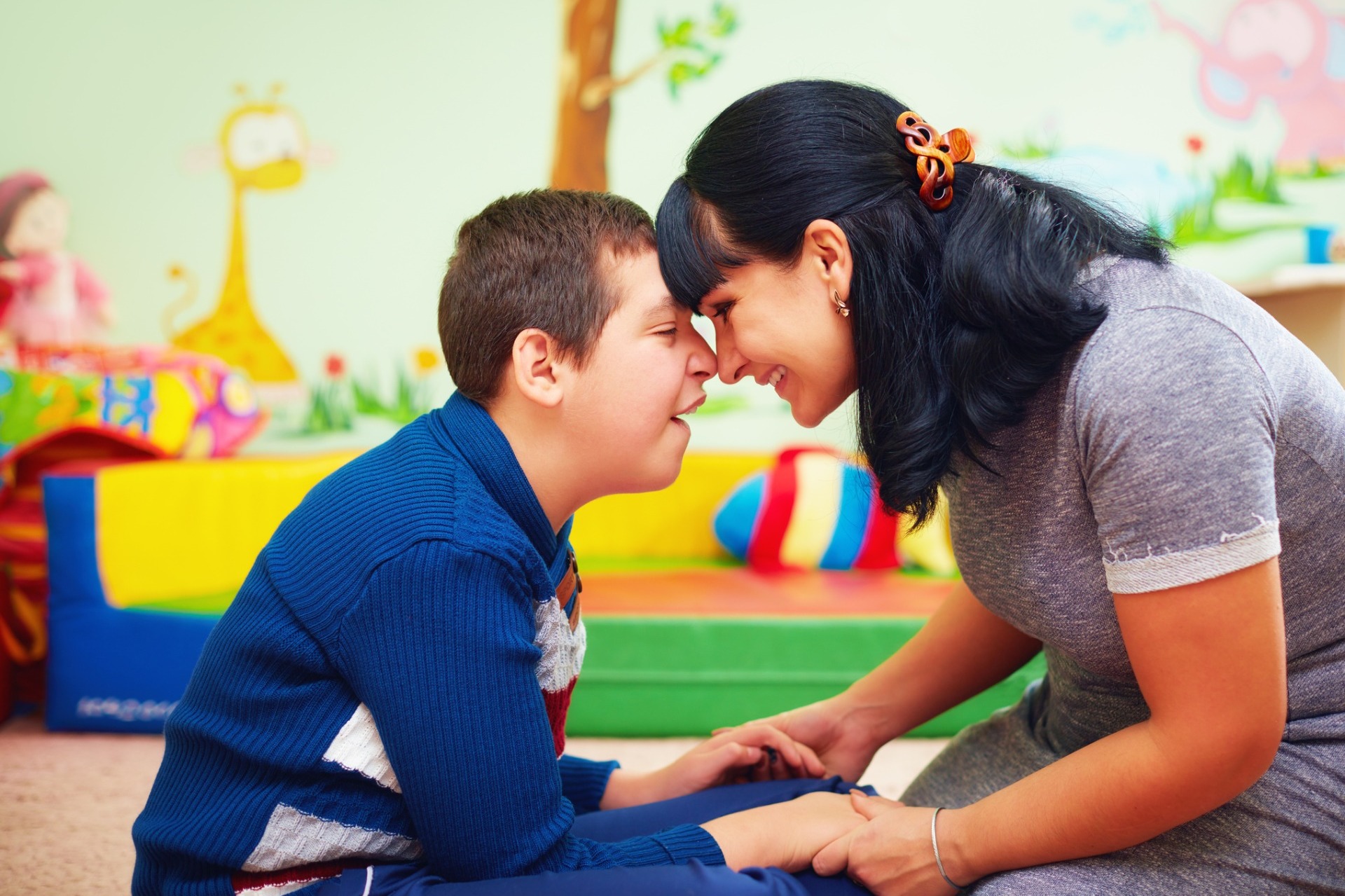“It Takes Two to Talk”
Posted on 4th March 2021 at 10:18
By Julie Wales, Family & Special Needs Counsellor
We all have dreams, aspirations, hope and expectation that one day our child will learn to walk, talk, and connect with other people and be at one with their world and make sense of societal norms.
But as we found many years ago when our son was a baby and toddler, learning all these things means so much more than learning the right words. It means learning to recognize feelings, understand thoughts and trust in the adults around you. It means learning to be a person and how to connect with another person.
A child doesn’t learn to communicate by himself. He learns through involvement with his world. We, his parents, are the largest part of that world and he relies on how we communicate with him and what opportunities we offer.
It Takes Two to Talk was written by Ayala Manolson, a speech and language therapist and founder of The Hanen Centre in Canada.
The Hanen programme became a vital part of our world. It taught my hubby and I how to communicate with our then, 1 year old son. He was diagnosed with Global Developmental Delay because for a while he did not walk or talk, and the medics thought he may be deaf. We knew physically he was different, having a larger head than he should, and his brain scans were looked at by medical Professors, to no resounding conclusion.
However, after hundreds of medical and developmental appointments and visits to a Geneticist our son was diagnosed with Fragile X Syndrome in 2002 aged 4 years old.
The early years were the most crucial in terms of communicating and development through play and through the lovely teachers and people we met along our journey.
The Hanen programme was our lifeline to communicating and helping our son and finding a way into his inner world. The course was run by specialist speech and language therapists through the specialist centre our son attended. There were about 8 couples (mum’s and dads) that attended fortnightly sessions over a period of a few months. The SLT videoed us at home interacting and playing with our son and then the video was shown to the group to offer us feedback on what went well and what could be improved upon. Wow was this nerve racking to say the least!
I don’t need to tell parents who care for someone who has delayed speech and language and a learning disability how hard it is, but to the public who the majority have no idea, it may be less visible. I can liken it to being in a foreign country and not knowing the language and being lost and having no idea where you are and where to go.
So, The Hanen Programme taught us to Observe, Wait and Listen.
Observe
Even when our children don’t use words, we can easily recognize their feelings or needs when we take the time to observe their:
Focus of attention
Facial expression
Body language
But as with our son sometimes children’s facial expressions, actions and focus of attention are not clear enough to help us know what they are trying to tell us. He always sat and smiled and gurgled which was so cute, but it didn’t offer the cues to help him. Observing the following subtle cues can be helpful:
Your child’s state of alertness (feeling sleepy or unwell)
Rate of breathing
Change in skin tone
The pitch, volume, and duration of their sounds (hungry, tired, need to play…)

Wait
Waiting for our son to communicate was so hard to do! It took humongous patience and care. It felt like an age before we felt we got any response.
“When we wait, we give our child the time he needs to express his interests and feelings in his own way.” It Takes Two to Talk.
Waiting gave us the chance to get to know our son. We watched for his focus of attention (to food usually) or a toy, looked at his facial expression and listened to the sounds he made.
Listen
Are you listening to the music, Ben? Is it nice music? Good. Nice music. Good boy! Sound familiar? How many times do we have a conversation with our child where we do all the talking?
Even with older children and teenagers we find it difficult to just listen and take their lead and not resolve for them.
As parents we also found we were not on our son’s physical level, so we couldn’t really listen to him when we are sitting on the sofa and he is on the floor with a toy.

Observe, Wait, and Listen makes all the difference. The busy pace of our lives and the expectations we have for our children often interfere with our ability to OWL sensitively to them. Sometimes we need to just stop and consciously make the effort to OWL to become more aware of our children’s feelings, needs and interests.
If we find ourselves…
Doing all the talking
Helping when it’s not needed
Directing the show
Interrupting
Assuming we know what our child wants to say and have all the answers
…let’s remember to take the time to Observe, Wait and Listen.
Now in his twenties, our son is walking and talking but has a learning disability, which means he needs lots of help and care. I do have to check in with myself to keep Observing, Waiting, and Listening and it still makes all the difference to our communication.
Let me know if you try OWL and what a difference it has made to you and your family!

If you would like to discuss online counselling and support for you or your family, please contact Julie on 07412 651 894 or email hello@juliewalescounselling.co.uk. I look forward to helping you!
Share this post:






